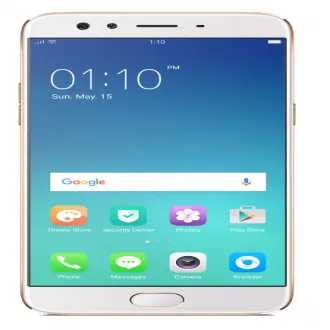Oppo F3 CPH1609 USB Drivers will help your Windows computer recognize your Android device. Then you can transfer files from computer to Android or even install the stock or custom ROM to your Android device.
Specs: OPPO F3
Screen: 5.5-inch FHD IPS LCD Display (1080 x 1920 Pixels, 401 ppi) with 2.5D Arc Glass
OS: Android 6.0 Marshmallow with Color OS 3.0
Chipset: Mediatek MT6750T
CPU: 1.5GHz Octa Core Cortex-A53
GPU: Mali-T860 MP2
RAM: 4 GB
Rear Camera: 13.0 Megapixels with Phase Detection Autofocus and LED Flash
- OIS
Front Camera: Dual Camera: 16.0 + 8.0 Megapixels with Screen Flash
- Dual Front Camera
Storage: 64GB
Expansion: Expandable up to 128GB via microSD
SIM Card: Dual SIM (Nano-SIM)
Networks: 4G LTE, 3G HSPA+, 2G EDGE & GPRS Networks
Wi-Fi: Wi-Fi 802.11 b/g/n
NFC: No
Bluetooth: Bluetooth 4.0
Positioning: A-GPS
USB OTG: Yes
USB PORT: MicroUSB 2.0
Sound: 3.5mm Audio Jack
FM Radio: No
Biometrics: Fingerprint Sensor
Sensors: Gyroscope, Compass, Ambient Light Sensor, Proximity Sensor and Accelerometer
Battery: 3200 mAh Li-ion Battery (Non-removable) with _ Charging
Material: Metal
- Corning Gorilla Glass 5
Dimensions: 153.3 x 75.2 x 7.3 mm
Weight: 153 g
Colors: Black, Gold and Rose Gold
Launch Date: May 4, 2017
Step 1 — Download and extract the Android USB Driver to your PC.
Step 2 — Click Start (Windows) -> Control Panel -> Device Manager (Select Device Manager).
Step 3 — On the Device Manager window find and click on computer name to select Add legacy hardware.
Step 4 — Select Next
Step 5 — Selext Install the hardware that I manually select from a list (Advanced), and click the Next
Step 6 — Select Show All Devices afterward click Next button again.
Step 7 — Click the Have Disk button.
Step 8 — Click Browse button to find the extracted Android ADB Driver -> android_winusb.inf and click on Open.
Step 9 — Click OK.
Step 10 — Now select the Android ADB Interface -> click Next button.
Step 11 — Click Next button again.
Step 12 — Windows Security box will appear, to confirm whether you really want to install the Android USB Driver, so just choose the Install this driver software anyway.
Step 13 — Once you clicked the Finish button, then repeat from step 2 to choose Android Composite ADB Interface.
Step 14 - Done.
